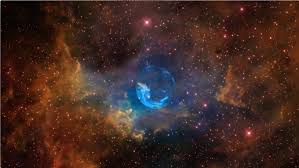When you watch the eclipse, keep an eye out for diamonds in the sky

As you may definitely know, a wide swath of the United States will transform into a goliath add up to sunlight based obscuration party on August 21. In case you're anticipating participating in the joy, pay special mind to Baily's Beads and the precious stone ring impact—the last beams of daylight prior and then afterward totality, when everything goes dark.
Baily's dabs resemble a string of blinding jewels around the edge of the moon. The last surviving dab, set on a ring made of the sun's crown, shapes the purported precious stone. The light show will keep going for not as much as a moment, so you will need to keep your eyes on the (vanishing) ball.
Obviously, the entire overshadowing will be a "sensational and genuinely amazing knowledge," says Rick Fienberg of the American Astronomical Society. Be that as it may, "all the genuine activity is in the most recent minutes before the moon totally covers the sun, and in the principal minutes when it starts to reveal the sun."
Baily's dabs and the precious stone ring both happen in light of the fact that the lunar mountains are the initial segment of the moon to totally slide over the sun's face. So as the moon moves amongst us and the sun, the peaks will break the bit of blasting daylight into a string of astonishing globules. Also, as the moon keeps on moving, you're in the end left with one final globule, the precious stone. It'll look as though it's determined to best of the internal sunlight based crown, the sun's white-hot crown of plasma.
Also, the experience is not the same as year to year—everything relies upon the territory at the moon's driving edge. Is it secured with remain solitary pinnacles, or a mountain go? Are the mountains soak or tenderly inclined? These elements can decide how sharp and particular the dabs look.
Francis Baily, an English space expert, first advanced the idea amid the annular shroud of 1836. Annular shrouds, not at all like aggregate obscurations, occur when the moon is further from the Earth, and along these lines unfit to totally hinder the sun. Be that as it may, in this 1836 shroud, something strange happened.
Obviously, "the moon never totally secured the sun," says Fienberg, however this time, "the coordinating size happened to be close to the point that he saw these dabs of light the distance around. So it was very amazing. Rather than being this circular segment of daylight, it was this ring of dabs that resembled an accessory!"
Baily himself disclosed his experience to the Royal Astronomical Society as takes after:
"At the point when the cusps of the sun were around 40° to shreds, a line of clear focuses, similar to a string of splendid dabs, unpredictable in size and separation from each other, all of a sudden formed...Its development in reality was rapid to the point that it displayed the presence of having been caused by the start of a fine prepare of explosive… the speed of the change was so awesome, and the peculiarity of the appearance so intriguing and alluring, that the brain was for the minute occupied, and lost in the examination of the scene, in order to be not able take care of consistently event."
Some friends and I are talking about heading a little ways south west to see the full effect of the eclipse. This will definitely be something to keep an eye out for!
This post has received a 100% upvote from @melowd. Thank You for sharing @crastty32. For more information about the service, click here!
Nice facts